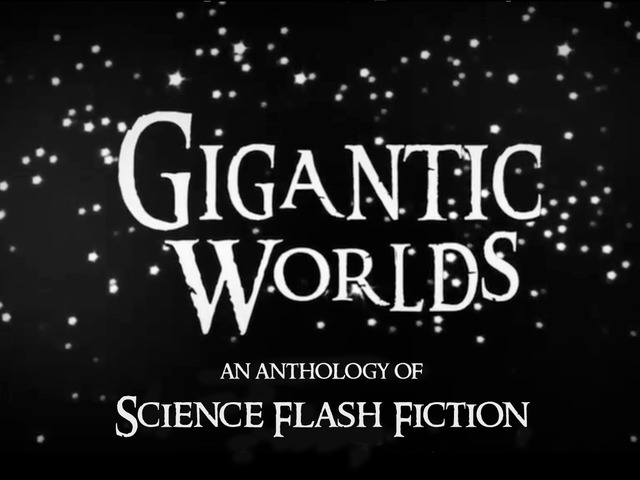
Gigantic, whose editors we interviewed earlier this month, are in the final days of a Kickstarter campaign to fund a science flash fiction anthology. The book, Gigantic Worlds, includes fiction from Jonathan Lethem, Lynne Tillman, Matt Bell, J. Robert Lennon, J.G. Ballard, and many more. To celebrate the end of the campaign, co-editor Lincoln Michel talked with Ed Park, a founding editor of The Believer and contributor to the anthology, about science fiction bands, James Tiptree, Jr., and invisible books. The Kickstarter ends on Saturday afternoon, if you want to check it out.
LINCOLN MICHEL: When I pitched this interview to Hayden Bennett, The Believer’s Logger at Large, he said we could talk about books or even “sci-fi bands!? I feel like he’d have to know about those.” So… do you?
ED PARK: Do you mean things like GWAR and Sun Ra, where the artists are supposed to be from another planet? Or more like Heaven 17 and Duran Duran—groups that take their name from sf? The Korean pop group 2NE1 feels science fiction to me—check out these videos for “I Am the Best” (my theme song) and “Can’t Nobody” (Watch what happens at 2:39).
LM: I was thinking the former, artists who develop a SF mythology about themselves. The latter reminds me of a period in the 90s/00s when seemingly every hardcore band took their name from Frank Herbert’s Dune. Off the top of my head, I remember Shai Hulud, StillSuit, Kwisatz Haderach, Muad’Dib, and Harkonen. There’s definitely a love of acoustics and sounds of words in Dune and other great science fiction.
EP: Did Harkonen have to drop the second n because the Harkonnen family might sue?
LM: Ha, they did only have one n. Maybe someone threatened to pull their heart plugs out if they didn’t change it.
If aliens landed here looking for a dance party, what Earth music do you think would move them?
EP: Rush’s “Tom Sawyer.”
LM: I’ve heard that you’re fascinated by James Tiptree, Jr. (aka Alice Sheldon). What book of hers would you recommend as a starting point?
EP: Ten Thousand Light Years From Home, her first collection, is fascinating. The tone is disorienting in its strange bluntness, as the stories deconstruct various sf tropes—the result of the female Sheldon writing and finding fame as the male (friendly, mysterious, macho) Tiptree. Julie Phillips’s bio of Tiptree/Sheldon, Double Life, is essential.
LM: You created The Invisible Library, a listing of non-existent books mentioned in works of fiction such as the infamous Necronomicon from the stories of H. P. Lovecraft. Are there any invisible titles you wish you could have on your non-invisible shelf?
EP: Invisible books are better savored in the mind. I’ll settle for the lengthy reviews of nonexistent tomes in Stanislaw Lem’s A Perfect Vacuum.
LM: What was the first science fiction book you remember loving?
EP: I have a distinct memory of picking up The Restaurant at the End of the Universe from a paperback stand at Kmart when I was around 10. What was this? I loved it—no matter that it was the second book. I’d never read anything like it, and I don’t think I came such effortlessly funny fiction until I got more into Wodehouse. I was into Vonnegut’s sf (Cat’s Cradle, Sirens of Titan—though not Player Piano, which I could never get more than twenty pages into), Bradbury, some Heinlein and Clarke and Asimov (the R. Daneel Olivaw/Lije Bailey books), and most of all Dune, which totally captured my imagination. I must have been 12, 13 when I started reading Philip K. Dick. The motivation: I was too young to see Blade Runner when it came out (1982), so I read the novel (Do Androids Dream of Electric Sheep?), with the movie tie-in art. (The initials were in somewhat bolder white type on the cover, which made me think “DADES” was in some sort of code.)
What else–Harlan Ellison’s anthology Again, Dangerous Visions (though not Dangerous Visions, which the library didn’t have)—Ellison’s brief intros were as interesting—more interesting?—than the stories themselves. I subscribed for a few years to Asimov’s, the sf magazine. I recently unearthed some of my copies from the mid-‘80s. The letters to the editor sections are so spirited and entertaining. Asimov constantly refers to his brilliance and good looks, as well as to the comeliness and smarts of the female editor-in-chief.
LM: What’s one science fiction classic that non-SF readers should really read?
EP: Joe Haldeman’s The Forever War. Brilliant, mind-bending sf. I read it as a kid and then again about six years ago. Did you know he went to Iowa? Cheever, Carver, and Elkin were his teachers. That’s right, bro—Cheever, Carver, and Elkin!
LM: I didn’t know that! But it makes me wish that Raymond Carver and John Cheever had written SF books I could read!
EP: You mean you never read WAPSHOT 2099?




